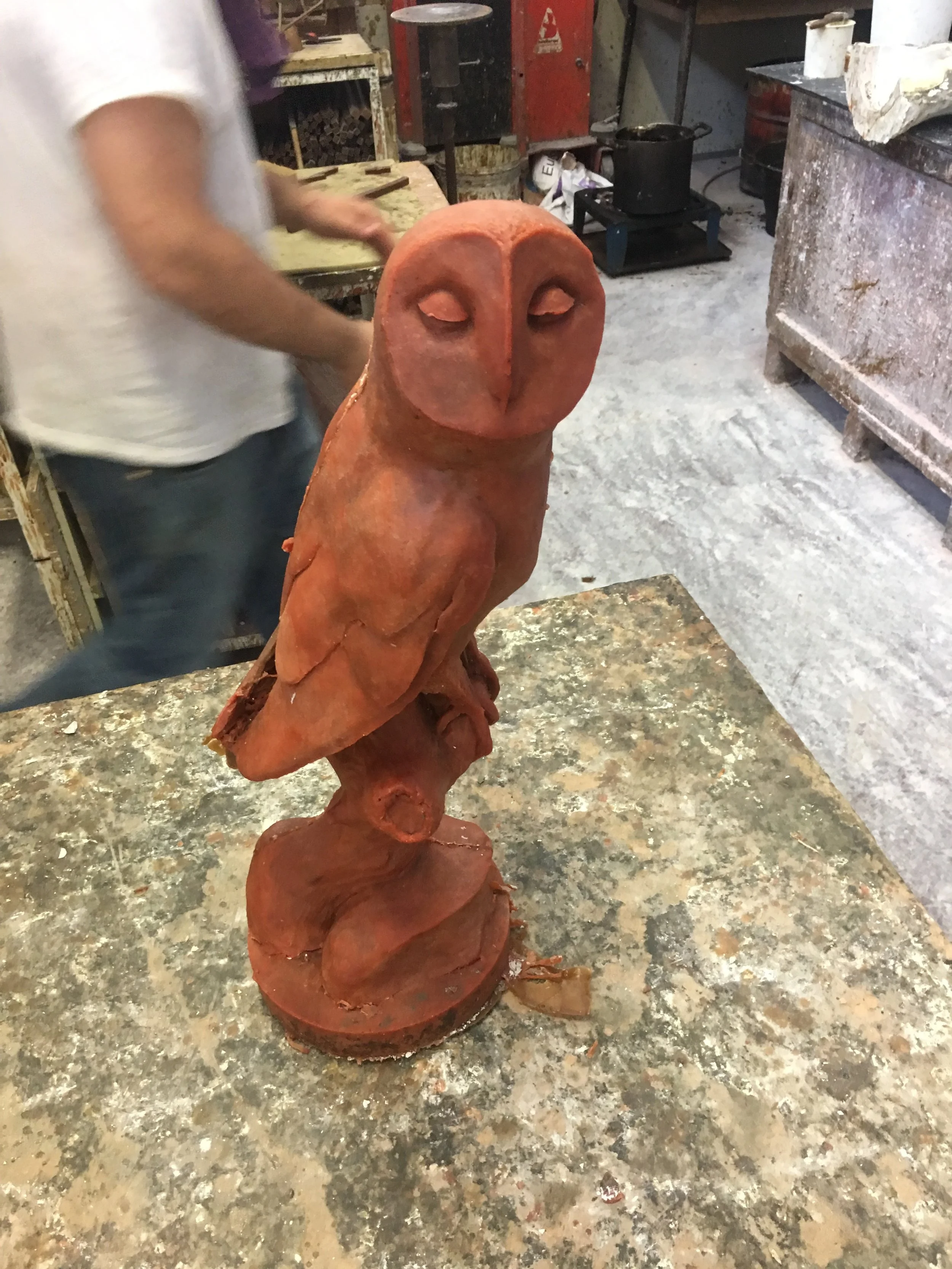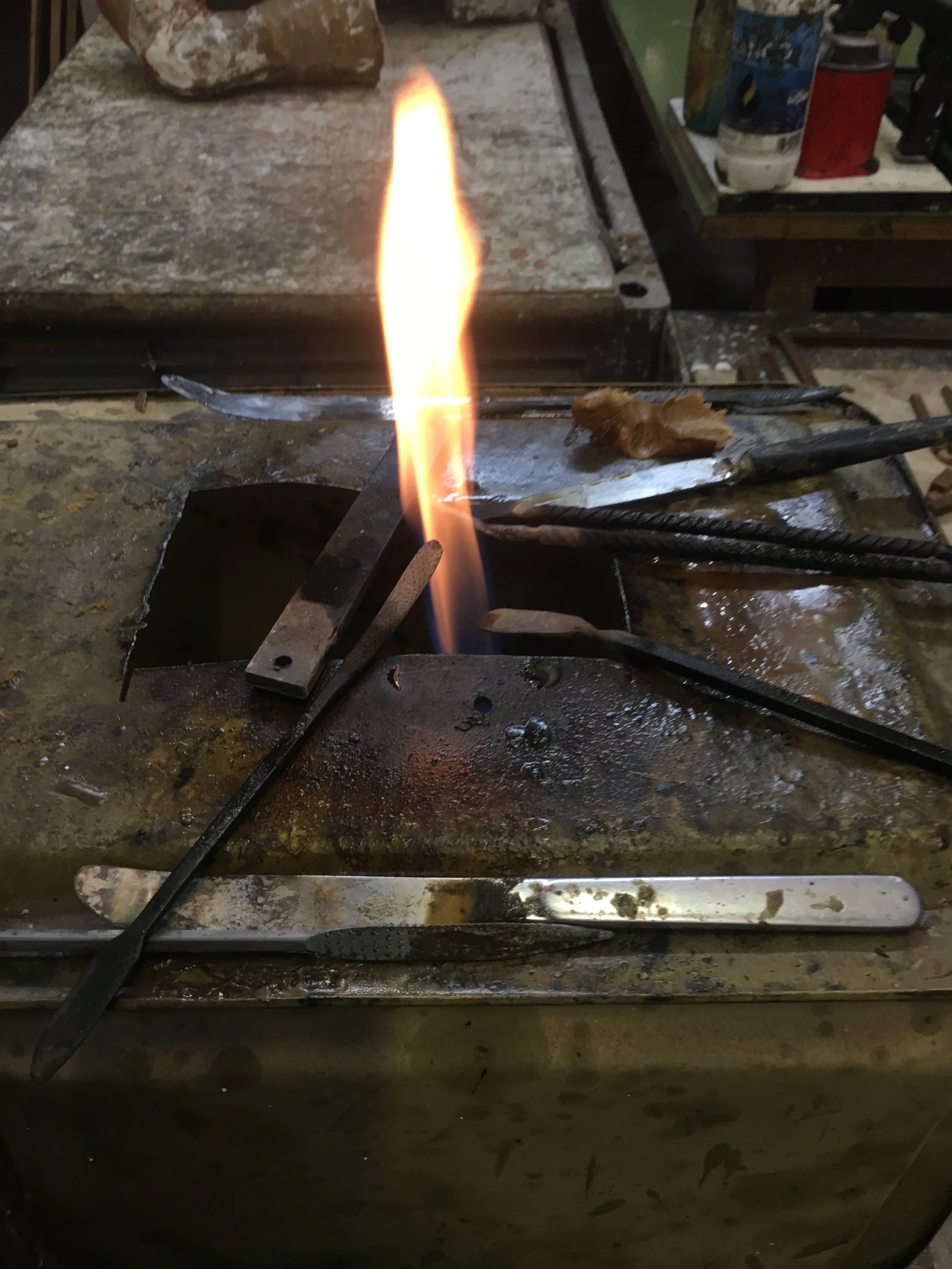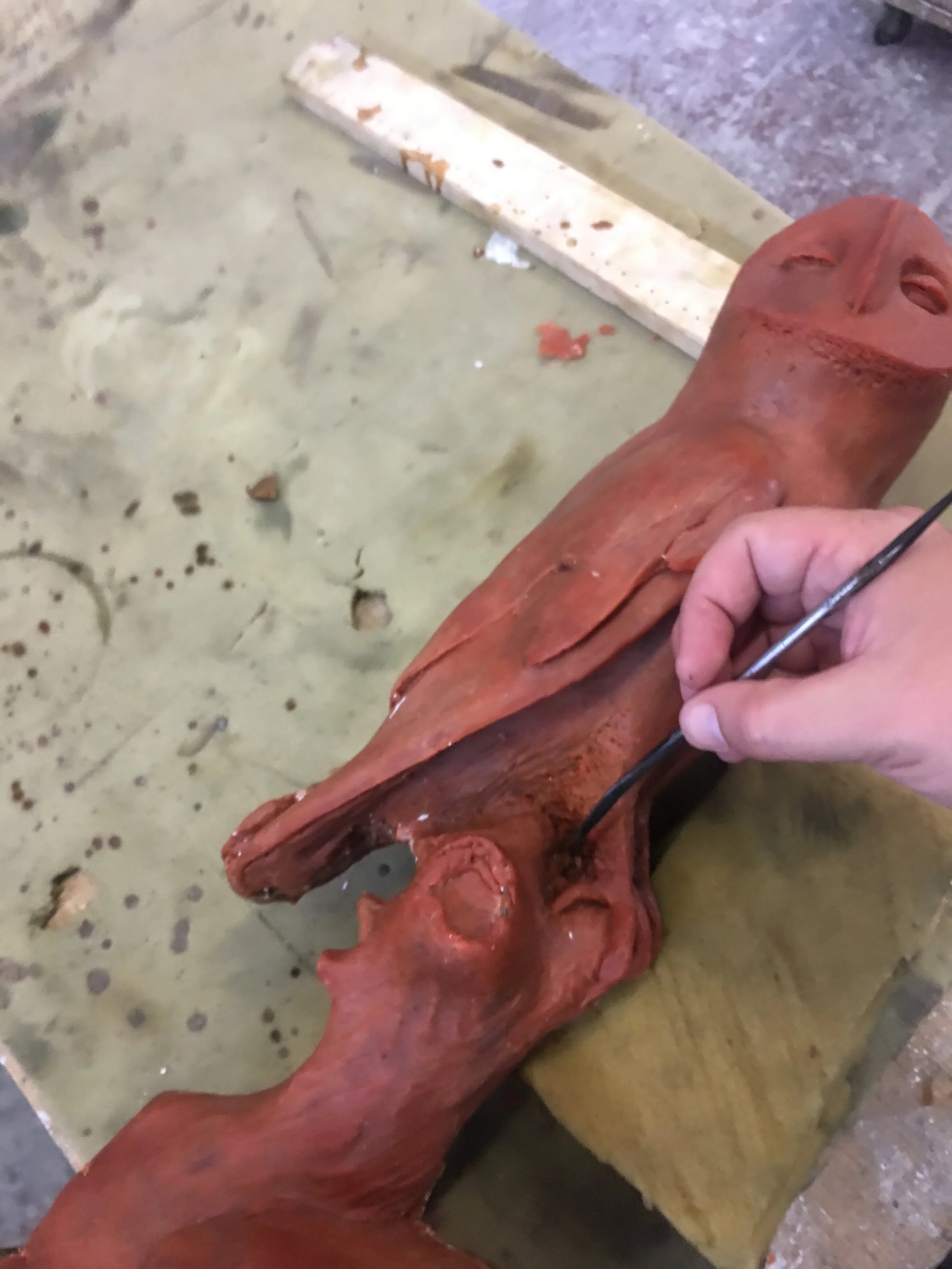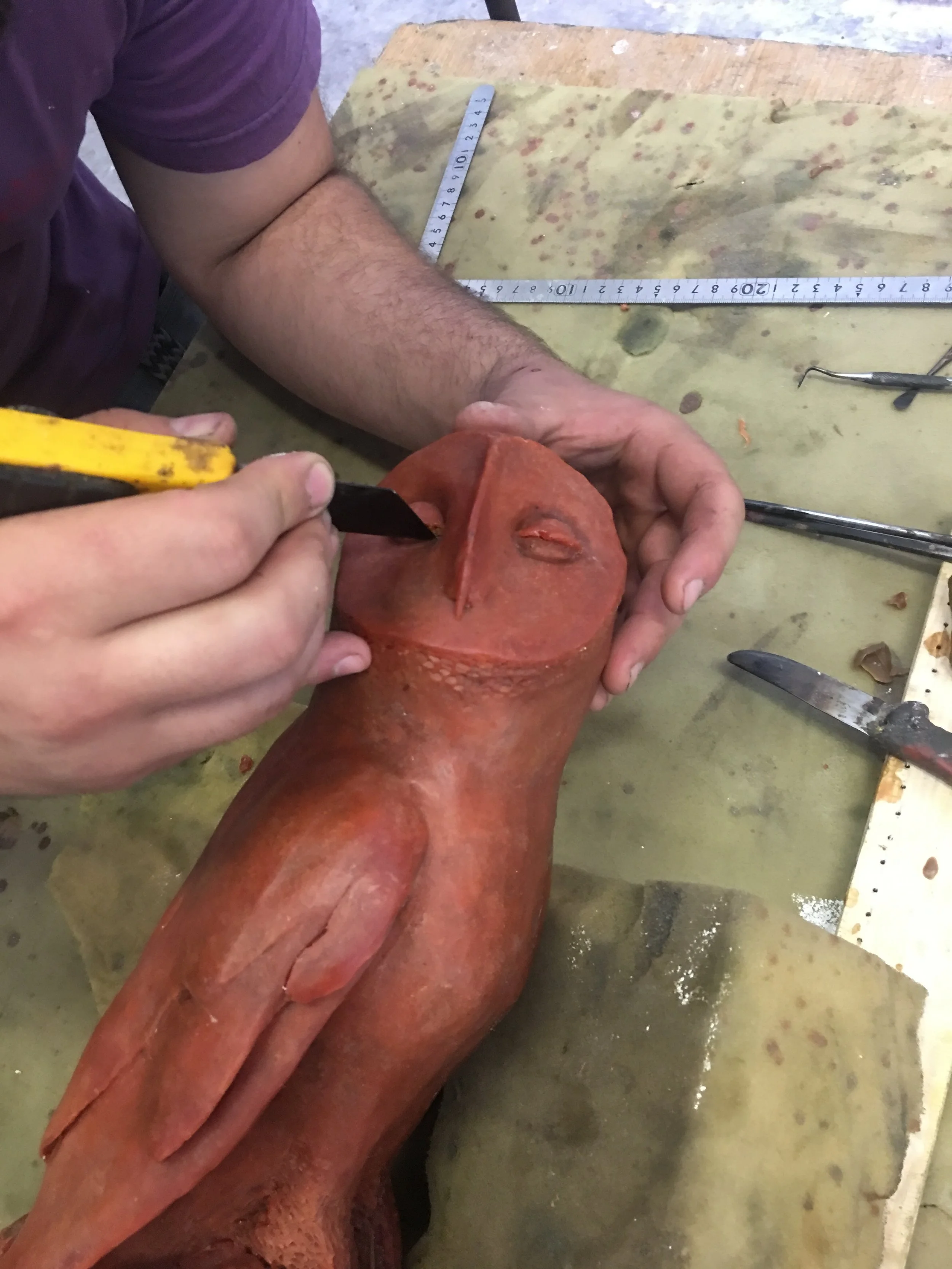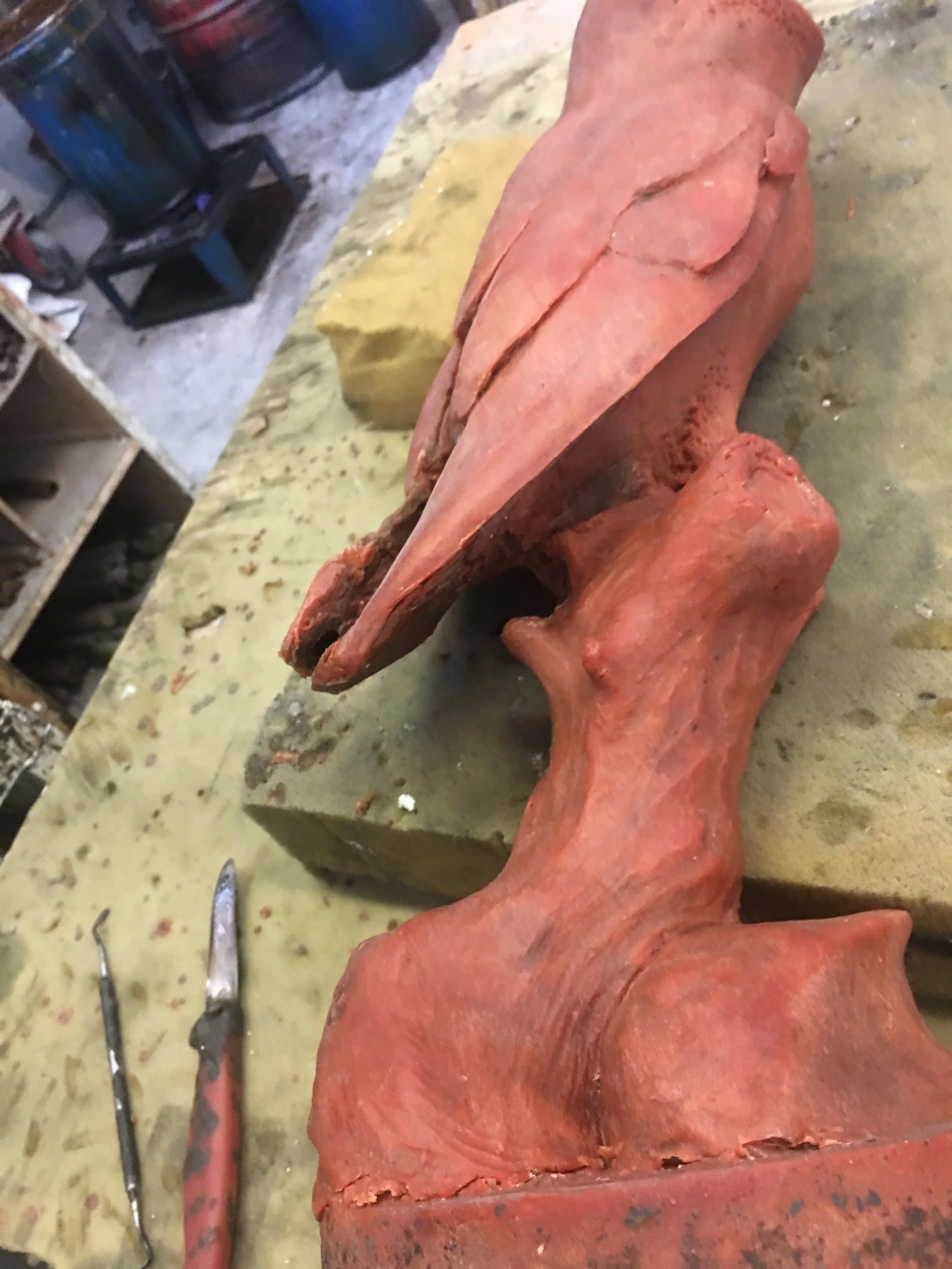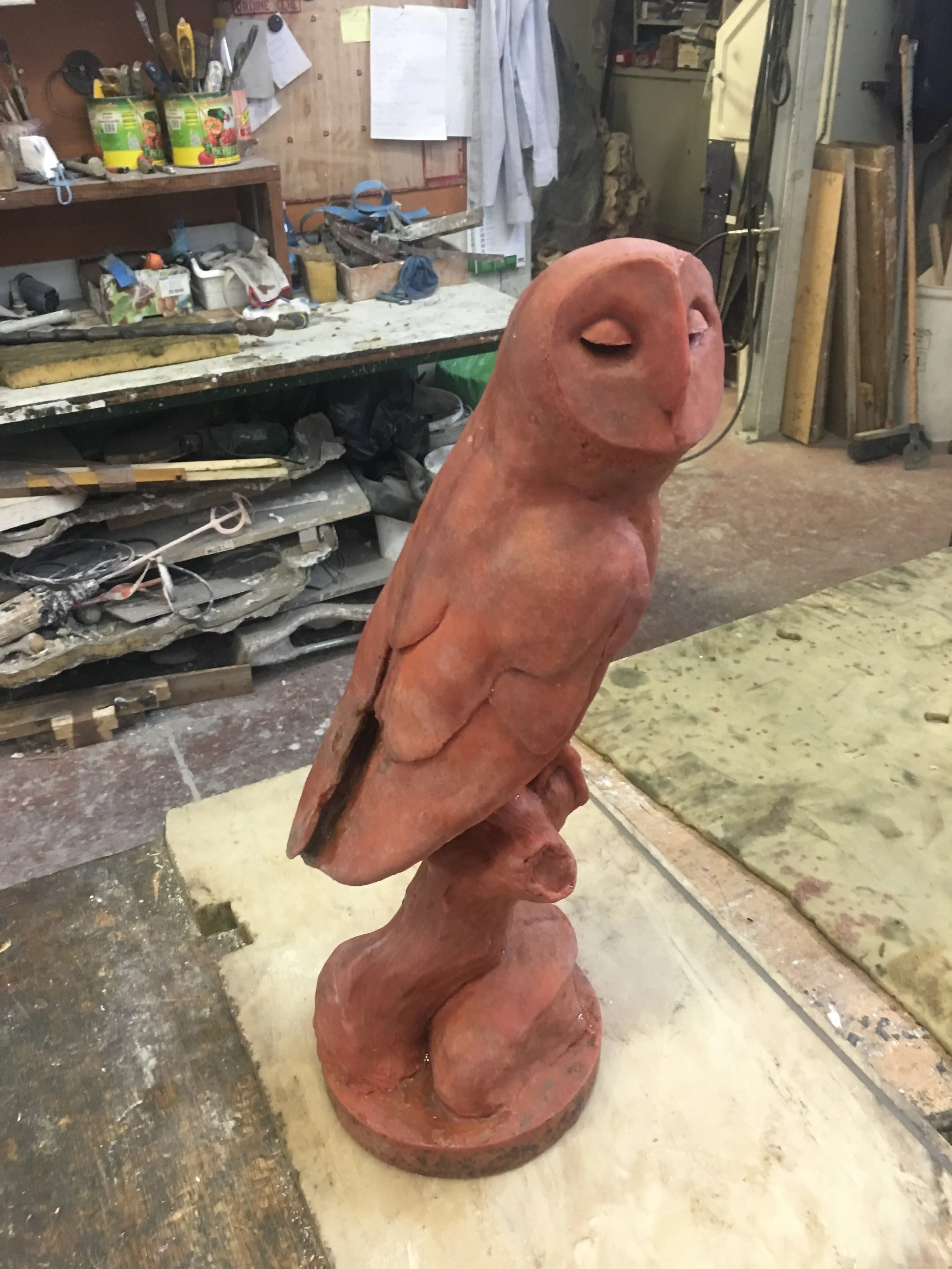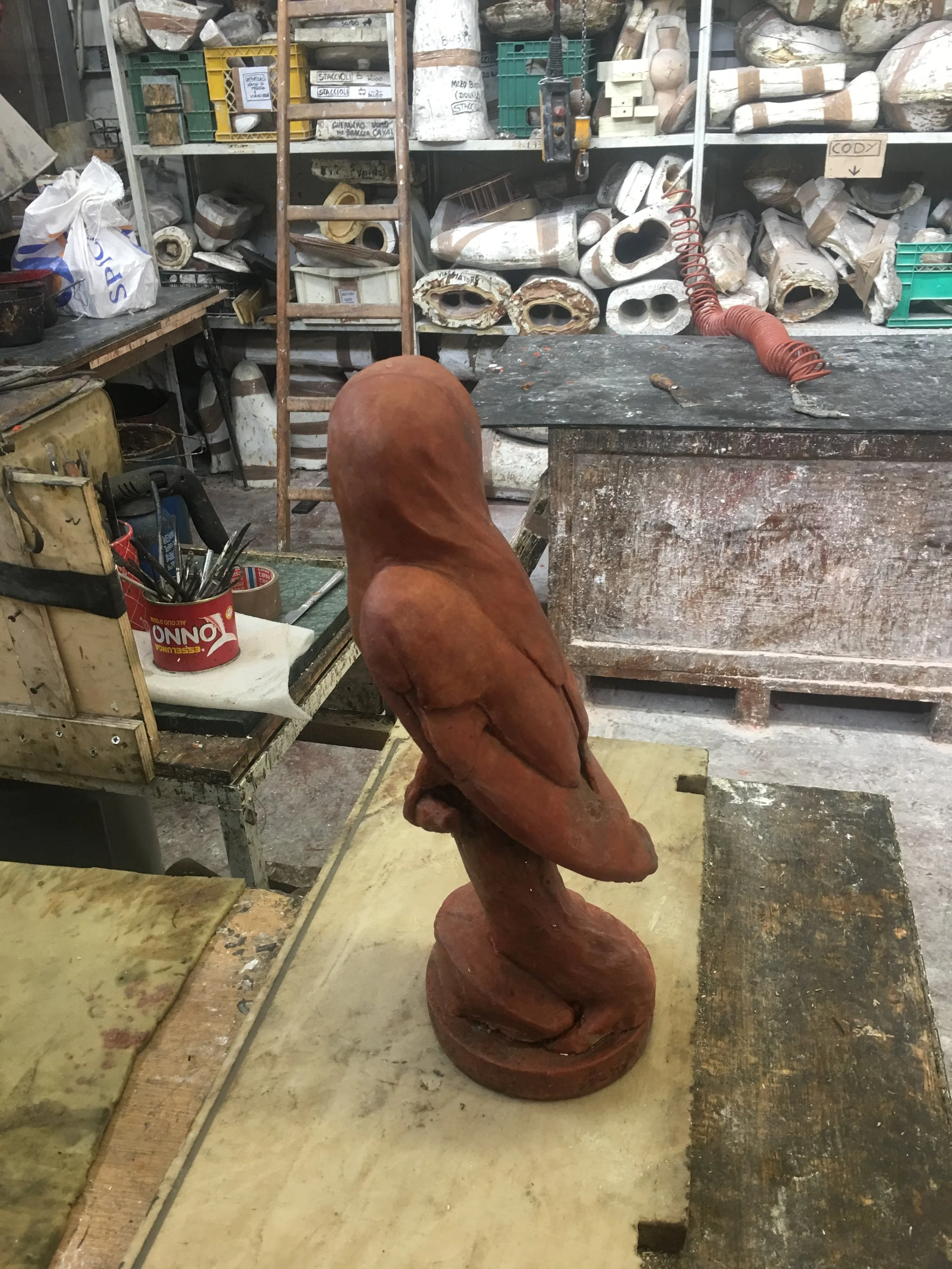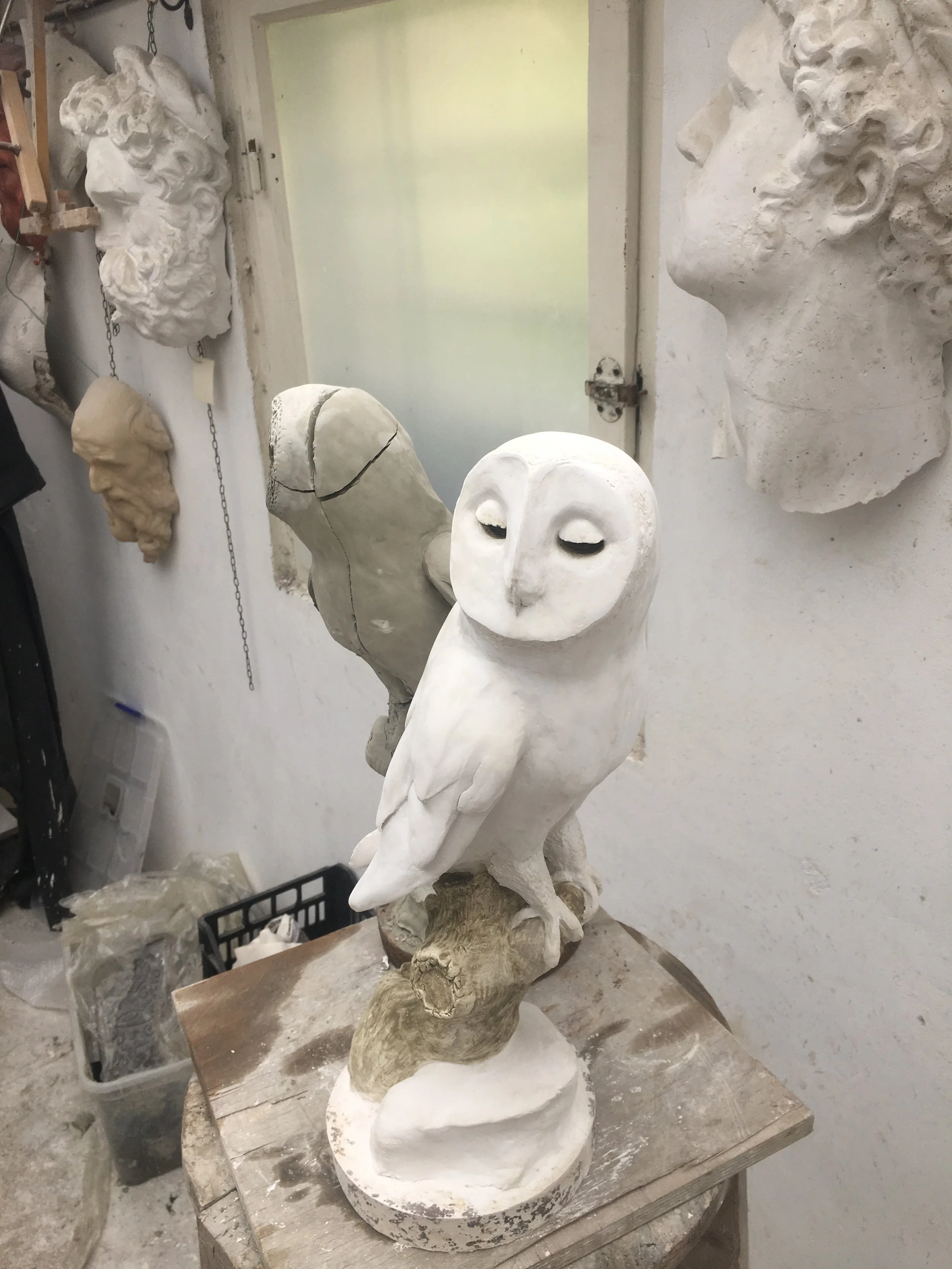Art'U Foundry, Working a Wax Model, Casting in Bronze
This week I would Travel to Art'U Foundry to do finishing on a wax model made from the mold I had contsructed earlier. These steps show how if you are going to be making a bronze, it is important to have a very good mould. The more work left unfinished during a mould making the more work you will have to do at the foundry cleaning up the wax cast. The plaster based mould that you have constructed will be sent to the foundry, where they will pour a 1/8 inch thick wax casting. the mould is then opened to reveal a wax cast of your original sculpture.
The mold with three coats of wax poured in the center giving a thickness of 1/8" here the mould is opened for the first time.
Rough Wax model is removed from mold. The eye sockets are sealed and other defects from the original mould remain.
Tools are heated to make working the wax easier, It is important to get a feel for how hot or cold you want the tools, too much heat melts more than you want, and not enough heat gives rough sloppy work.
Removing plugs in between the legs and tree.
Removing eye plugs and smoothing eye sockets.
Working on the overlapping of the wing tips
Finished wax model
The back of the wax model
After finishing the wax models are coated with a silica based solution. The silica based solution becomes a hard coating over the wax. The molten bronze is poured into this mould and burns up the wax inside filling the void with bronze.
After the bronze is poured it is cleaned off in a process called chasing. Chasing restores details and cleans up any imperfections from the casting process. When chasing is complete the sculpture is colored as a clean bronze, but patinas can be selected to help preserve the metal and give different color.
The patina is then applied. The Patina I chose gives a clean look to help show some of the details, but this type of finish is best suited for indoor display. For outdoor display a heavier patina would be needed.



